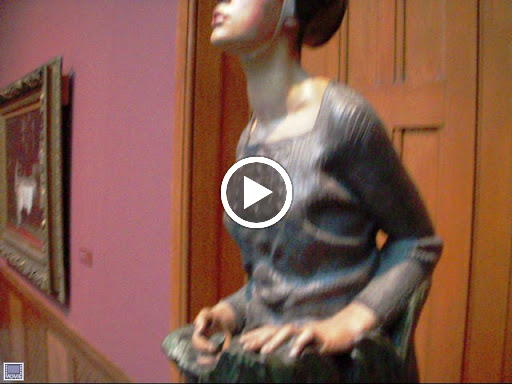
(Butler)
Because it seems the quintessential embodiment of the American spirit, this painting is one of Winslow Homer's most discussed and reproduced works. As one of our greatest artists, Homer and his life are justifiably the subject of a voluminous body of scholarly writing. Snap the Whip, dating from just about the mid-point of his life, tells us a good deal about some of the critical transitions in his artistic development at that time. However familiar and appealing such a work seems to us, it delights and informs with each new look we bring to it. One of the reasons it is so well known is that it exists in several versions: a large figure drawing for the central group of boys (1872, Cooper-Hewitt Museum, New York), a finished oil study (1872, Metropolitan Museum of Art), the final Butler Institute canvas, and another figure drawing believed to be a cartoon (Fig. 1), for the nearly exact replica executed as a wood engraving and published in Harper's Weekly, September 20, 1873 (Fig. 2). In addition, there are a few closely related works also dating from the early seventies, School Time (n.d., Collection of Mr. and Mrs. Paul Mellon, Upperville, Va.) and Country School (1871, Saint Louis Art Museum). As Homer moved from drawing to study to larger painting, he made a number of compositional adjustments and refinements, a characteristic process for him in his treatment of a subject in different media or scales. For example, there is only one tumbling figure to the left in the Cooper-Hewitt and Metropolitan images, and five instead of four boys in the central grouping. Homer began the oil study by including the background hillside, which he then painted out, possibly to keep some spaciousness in this small format. Clearly, the larger size of the Butler Institute's painting allowed him to maintain the mountain setting, a formal echoing of the curving diagonal line of boys in the foreground.
From his early training as a draftsman and printmaker in Boston and subsequent experience as an illustrator for Harper's Weekly, Homer entered his artistic maturity with a consummate skill for compositional organization and telling detail. Here he fuses in perfect equilibrium the three principal elements of his painting-mountains cape, school building, and figures-both as subject and as design. This tripartite balancing has a further expression in the whip line itself: the three anchoring boys at the right, the four running figures in the middle, and the two flying off at the left. As Jules Prown has shown us, Homer's visual theme is that of interdependence and interconnections, held and broken, among human beings. Painted just as the artist was moving from his own youth into middle age, this, and a number o related images from the mid-1870s, suggests he increasingly had in mind his own sense of relatedness and separateness within family and society. As obviously lighthearted, dynamic, and spontaneous as Snap the Whip appears in both form and content, a number of subtle internal tensions heighten its meaning; the play of stillness and motion, running and falling, stones and flowers, interior and exterior, wilderness and construction, physical and mental. This latter contrast is especially pertinent, for the game is taking Place during a midday break indicated by the shadows of a high sun-from the disciplines of learning inside the schoolhouse behind.
Speculation about the location has proposed Easthampton, Long Island, and upstate New York, where Homer had painted at the beginning of the 1870s. But both the hilly landscape and the sketch for a later schoolteacher picture are more specifically associated with the inland location, though typically Homer generalizes his image beyond the moment. At this time there was nostalgia for the disappearing "little red schoolhouses' contrasted with significant reforms taking place in American education, the new role of the teacher, and changes in the curriculum emerging in the decades after the Civil War. Homer must have thought more broadly about these matters, for this thematic series of paintings depicted play as well as study, freedom as well as detention, the teacher alone and with students, and the schoolhouse as a classroom, a solitary building, and a backdrop. Indeed, its clean cubic form stands as a central focus of order, proportion, and intellectual clarity within the encircling arms of boys and mountainside.
Along with Mark Twain's writings, Homer's pictorial visions in the 1870s are among America's supreme celebrations of youth and the cult of the "good bad boy" of the time, when humor mixed with serious truths, and play, like work, held risk as well a pleasure. We cannot be certain how much Homer identified with his subjects then, as we know he did in later decades, but the critical issue of aloneness versus community that seems to underlie works like Snap the Whip and Dad's Coming (1873, National Gallery of Art, Washington, D.C.) was one that his life and art would face from here on out. Significantly, after Snap the Whip, there would never be another painting of a large and active group of figures in Homer's art.
JOHN WILMERDING (Butler Institute of Art website)

(Metropolitan)


